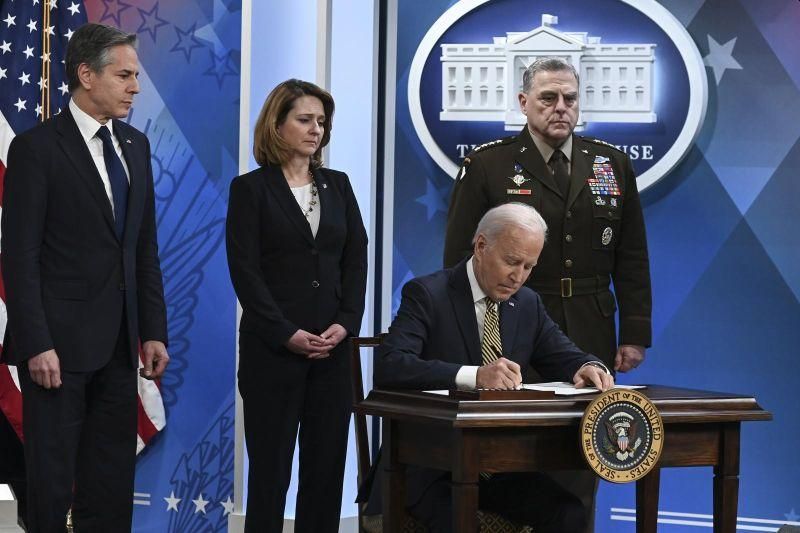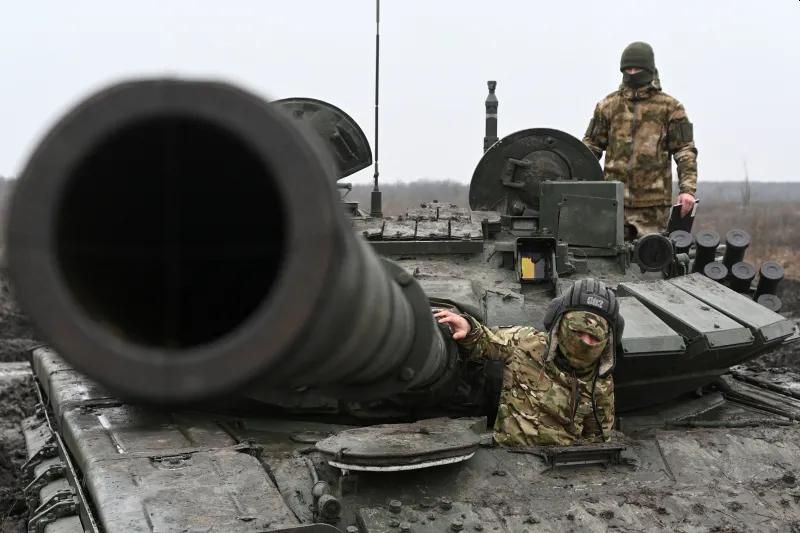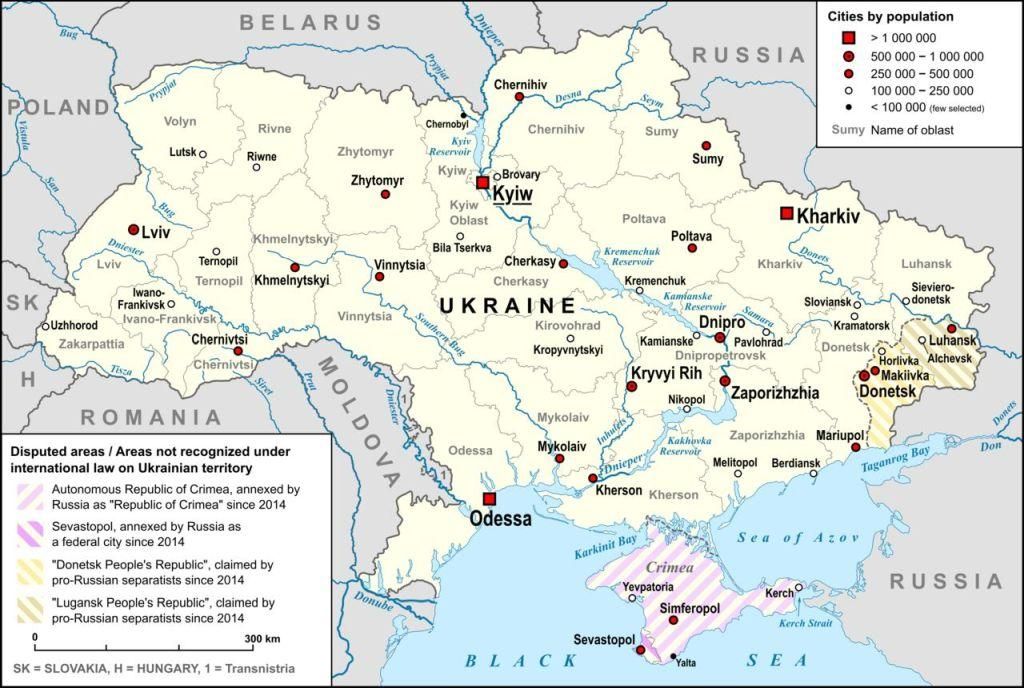By Eric Vandenbroeck and co-workers
Apart from the
difficulties of negotiating with Putin any
supporting governments are concerned about the cost of aid to Ukraine. Hence it
also took the U.S. Congress seven months to approve the last funding measure to
provide aid. A November Pew poll indicates that most Americans support helping
Ukraine, yet roughly a quarter believe that Washington has been providing too
much assistance. Elected officials, including Vice President-elect JD Vance,
continue making misleading comments about being “half a trillion dollars in the
hole for the Ukraine conflict.” The billionaire Elon Musk, who is helping the
incoming Trump administration sort out plans to cut federal spending, posted on
social media last February that it was “insane” for the United States to
continue its investment in Ukraine.
Such worries are
understandable. The United States is faced with numerous challenges. Illegal
immigration, financing the national debt, competition with China, war in the
Middle East, and a generally unpredictable global security environment all
compete for attention and resources. It is not surprising that it is difficult
for Washington to sort out its priorities.

But Americans worried
only about the cost of helping Ukraine are thinking about the issue in the
wrong way. They should be worried about the cost of not helping Ukraine. Right
now, by providing aid to Kyiv, the United States is preventing Russia from directly
menacing eastern and central Europe, which would doubtless consume even more
U.S. resources. Washington may deter a direct war
between NATO and Moscow, one in which U.S. forces would have to fight.
To figure out just
how much money supporting Kyiv saves Washington, in a report to be released in
January, my colleagues and I at the American Enterprise Institute added up the
expenses the United States would face if Russia defeats
Ukraine and then positions forces along NATO’s border. We considered the
military capability, capacity, and posture the United States would need to
deter and, potentially, defeat Russia should the Kremlin attack a NATO
ally—while still preventing further conflict with emboldened adversaries in the
Pacific and Middle East.
The resulting number
is exorbitant. According to our calculations, defeat
in Ukraine would require the United States to spend $808 billion more on
defense over the next five years than it has budgeted. Since 2022, by contrast,
Congress has appropriated $112 billion to the Defense Department to assist
Kyiv. That means the aid provided to Ukraine through the Pentagon is less than
14 percent of what it would cost Washington to defend Europe against a
victorious Russia. (That $112 billion is also mostly spent at home, on domestic
weapons production.) Put another way, allowing Russia to defeat Ukraine would
cost the United States about seven times more than preventing a Russian
victory. Aiding Ukraine, then, is the right financial decision.
Russians soldier at military drills in the Krasnodar
region, Russia, December 2024

Total Defeat
If the United States
stops supporting Ukraine, Kyiv will be in deep trouble. Despite their efforts
to mobilize their industrial bases, Ukraine’s European partners do not have the
military and manufacturing capacity to fill the gap Washington would leave behind.
The continent’s political will to build more capacity would diminish as U.S.
support tapers off. Ukraine has made strides in expanding its own industrial
base, but its military manufacturers cannot churn out enough weapons to hold
off a country with more than three times its population. (Ukraine’s
deficiencies in turning out air defense, artillery, and armored vehicles are
especially pronounced.) Even if those manufactures could keep up with Russia,
Moscow also has partners providing manpower, weapons, and other resources.
Without U.S. support,
Russia would advance in 2025 as Kyiv runs out of weapons. By 2026, Ukraine
would lose effective air defense, allowing Russia to conduct continual
large-scale bombings of military and civilian infrastructure. Faced with such
an onslaught, Ukraine’s conventional forces would fight valiantly, but they
would have little hope of holding out. The country’s military would likely
collapse by the end of that year, allowing Russia to seize Kyiv and then drive
to the NATO border. Moscow, in other words, would be unequivocally victorious.
Russian President
Vladimir Putin would be happy with such a victory. But he would be unlikely to
be sated. Putin, who once called the collapse of the
Soviet Union “the greatest geopolitical catastrophe” of the twentieth century,
has not been bashful about his desire to dominate eastern Europe. He would, if
anything, be emboldened by victory over Kyiv. He would also be motivated to
maintain a posture of crisis management to avoid domestic challenges: Putin has
staked his claim to power on the notion that he is protecting Russia from a
rapacious West. After subjugating Ukraine, the Kremlin would likely
reconstitute Russia’s combat units in Belarus and in western Ukraine, on the
border with NATO members Poland, Slovakia, Hungary, and Romania. Russia would
also likely begin stationing missiles, aircraft, and other military equipment
near the Baltic states and Moldova. Moscow would then establish interlocking
air defense systems along the NATO frontier, from the Black Sea to the Arctic.
Ukraine’s resources
would help Moscow threaten the rest of eastern Europe. With the Ukrainian army
under its domain, the Kremlin would have hundreds of thousands of additional
highly trained, skilled, and battle-tested soldiers whom it could press into service.
It could also conscript the millions of Ukrainians whom Kyiv has not mobilized.
Additionally, control over Ukraine would afford Russia more defense industrial
capability and economic capacity. Moscow would still need time to recover from
its current invasion before it could launch a new one. But by 2030, it could be
ready to attack a NATO state.

The Surge
Some Americans may
not care all that much about stopping Russia from attacking NATO. But the
notion that Washington should disengage from Europe, and save its resources for
other matters, misses the global nature of conflict. Europe should certainly
invest more in its defense. Yet over a century of history shows that when the
United States disregards its interests in a region, violent conflict inevitably
drags it back with threats to U.S. security and prosperity. U.S. retreat in one
area also emboldens Washington’s adversaries elsewhere. Simply put, regional
conflict is a thing of the past.
To protect itself—nationally,
militarily, economically, and reputationally—the United States must therefore
remain a global power and invest in the capabilities to do so. If Ukraine were
allowed to fall, Washington would need a military that is larger, more capable,
more responsive, and positioned in more locations. To deter Russia and, if
necessary, defeat Russia after it topples Kyiv, the U.S. armed forces would
need nearly 270,000 new service members. Most of those—161,000—would go to the
army, which would require far more than the 943,000 soldiers it plans to have
by 2029. It would use those additional soldiers to create 14 new brigade combat
teams, giving the branch a total of 72 such teams. The extra 14 brigade combat
teams would allow for 11 teams to be deployed to Europe at any given time,
doubling the U.S. presence there. This extra presence would allow Washington to
conduct fuller operations, as well as to respond more rapidly to any crises
that broke out. It would also increase the all-important comprehensive
exercises the U.S. and its allies undertook in the region, which would enhance
their readiness and bolster deterrence. In total, the land component of the
projected increase would come to nearly $88 billion.
Similarly, the
planned U.S. Marine Corps force of 205,000 would have to increase by more than
31,000, in part to create eight new infantry battalions—two that are active and
six in reserve. Each active infantry battalion is made up of around 6,600
marines, including support personnel such as logisticians and intelligence
workers. Reserve battalions are made up of about 2,300 marines, plus support
personnel. These new battalions would help the Marine Corps continue to deter
China and North Korea, which would be more tempted to challenge Washington if
Moscow wins. They could also help fully man three Marine Expeditionary Forces
to fill any gaps the army leaves in the Middle East as it pivots to eastern
Europe. The additional battalions would also provide the United States with
more amphibious forces in the Baltics.
Preemptively building
up Washington’s land presence in Europe would be particularly essential
because, should Russia invade a NATO country, it would do everything possible
to stop the United States from moving more resources in after the conflict
breaks out. That fact also means Washington would have to carry out extensive
construction in Europe to harden existing facilities and build new ones, likely
costing about $31 billion. It would need to build many small, dispersed, and
fortified weapons depots throughout the European theater. And it would have to
either tell U.S. soldiers they can no longer bring their families to eastern
Europe or spend more to protect those family members.
Defeating Moscow, of
course, would require a lot of airpower. Making sure
Washington could attain such air superiority would call for more fifth- and
sixth-generation fighter jets that can take down Russian attackers. Winning
would also necessitate more air-refueling tankers and transport craft so that
fighter jets could stay in the air and so that the United States could move
forces and equipment to and around the region. Washington would need to keep
its F-22s in the fleet longer than expected and to accelerate the development
of new military aircraft. Planned retirement of KC tankers, which refuel planes
midair, and C-series transport craft would similarly be delayed. The United
States would need to spend more on aerial refueling drones so it can extend the
range of its jets. All in all, the United States would require a total of 683
more aircraft and associated capabilities than it plans to buy by 2029, costing
around $109 billion.
The Deal of the Century
The United States’
investment in unmanned systems would need to go beyond just refueling drones.
The war in Ukraine has shown just how essential unmanned aerial vehicles are to
the future of combat. Throughout the invasion, both Kyiv and Moscow have depended
on masses of drones to see the battlefield and to overwhelm and attack the
other. Yet when it comes to this type of technology, the United States is way
behind. To handle a drone-savvy Moscow and acquire this disposable resource
used in a growing array of missions, Washington would need to make a
substantial investment in unmanned technology and platform manufacturing and
development, to the tune of $29 billion.
The United States
would also need better air defenses. If Ukraine falls, Russia would have a new, 2,600-mile border with NATO, where it can
mass its weapons and more than 900,000 troops, plus whatever forces it
conscripts from Ukraine. That means the United States would need to extensively
deploy air defense and munitions, both precision and conventional, procurement
of which will likely cost around $173 billion. Manufacturing these resources at
the pace and quantity needed would require expanding the U.S. industrial base
and maximizing existing production lines, particularly for short- and
long-range weapons. To produce the quantities of munitions and ships Washington
needs, the U.S. government would have to spend an additional $63 billion just
on increasing industrial base capacity.
Although a conflict
on the European continent would be primarily led by land forces, under the
cover of air forces, Washington would need better maritime capabilities, as
well. A resurgent Russia may harass shipping in the Black Sea and the Atlantic,
and an opportunistic Iran and its proxies could do the same in the waters
around the Middle East. To stop such harassment without curtailing its presence
in the Pacific, the U.S. Navy would have to discard its plans to shrink its
fleet by nine ships. In fact, it would have to add 18 new battle force ships,
including two carriers, to stabilize the fleet at 12. The navy would also need
four submarines (including delaying one LA class retirement), three new
destroyers, and three frigates to improve its flexibility for positioning
maritime combat power, as well as six more logistics and support ships to keep
the fleet at sea longer. Together, the shipbuilding would cost around $50
billion more.
And then there is
everything else Washington will need to deter and defeat the Kremlin. The
United States will have to maintain higher readiness for home-stationed and
deployed forces, spending around $185 billion on additional training and
exercises. It will need to improve its facilities and stockpiles of spare
parts, which will cost close to $33 billion. It will need more and better
special operations forces, which are essential to intelligence, shaping the
battlefield, and generally disrupting the enemy. The price tag for that
expansion will be over $10 billion. Given that Russia is an experienced space
and cyber power, the United States will also need better architecture and
command systems for both domains, costing another more than $36 billion.
Add up all these
figures, and one arrives at $808 billion. It is an enormous
sum—roughly equal to the entire Pentagon budget in 2022. And it may be
an underestimate. Instead, if Kyiv prevails over
Moscow, Russia would retreat behind its own borders
with a defeated and diminished military, a struggling economy, weakened
partnerships, and a healthy dose of domestic challenges. Ukraine, by contrast,
would be vibrant and free, with a thriving industrial base and a modern
military. Washington would thus be able to scale down its deployments and
capabilities in Europe. It would still maintain a presence there, but it would
be able to dedicate more resources and attention to the Pacific—a desire of
many U.S. presidents, including Donald Trump.
Not only is the
United States safer when it is engaged, but it is also more fiscally
responsible. It is expensive to deter a war, yet it is more expensive to fight
one. Washington is facing a multitude of global threats, and so it is
understandable that officials would second-guess the cost of helping Kyiv. But
given the stakes, Americans must have clarity on the long-term costs, not just
the upfront expenses. Supporting Ukraine is not only morally right but
financially right. It is a prudent investment in U.S. interests.
For updates click hompage here